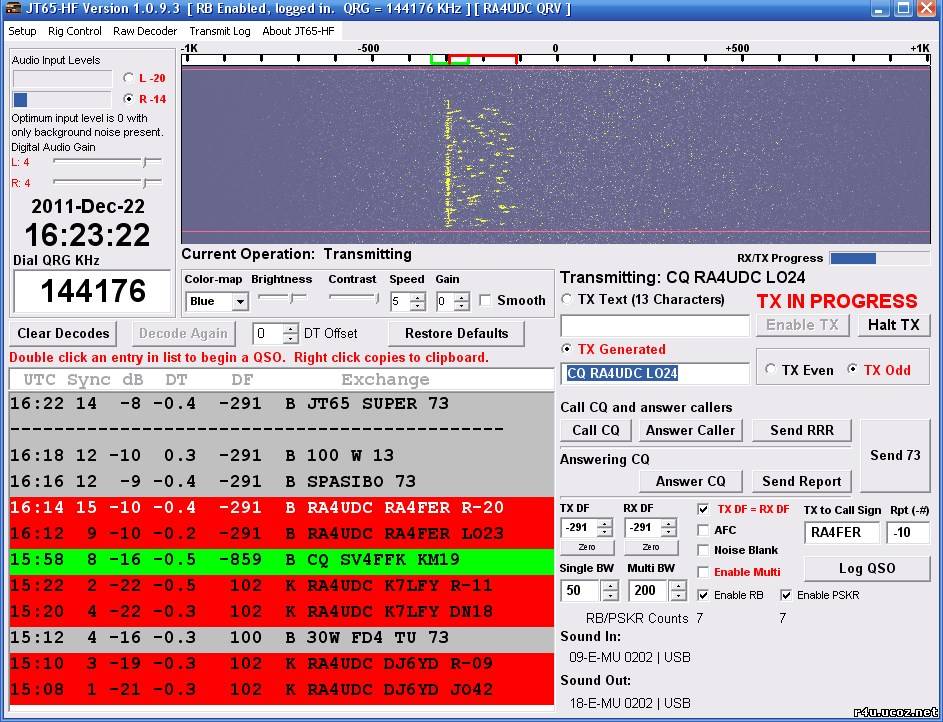


However, that did not stop the curious from trying it on HF. Now, I said FT8 was ORIGINALLY intended for use on 6m, which is true.

For Sporadic E, FT8 or FT4 seem to do the job just fine. JT65 is still the best mode for sensitivity so for real low signal work, use JT65. There is a slight trade off in sensitivity between JT65 and FT8, but most operators were willing to accept that for the increased QSO rates. DX was everywhere! Even for my single element receiving station, I was hearing places that I could have only dreamed of a few years ago. I spent a lot of time on 6m during 2017 and it certainly paid off. FT8 on 6m took off and it was discovered that the band was open far more than had been previously thought. thanks again to FT8.īecause of the fast overs, a degree of automation has been added so that the operator does not have to get flustered trying to find the right button etc.
Jt65 fldigi plus#
We have now discovered that the 2m band has far more tropo openings than was thought, plus it has been a useful tool for random MS. With the fast tx/rx periods, you can work many stations in just a few minutes. In ‘Es’ openings, signals are usually strong so this is not much of an issue. The trade off is a drop in sensitivity by a few dB. FT4 takes this one stage further, with periods of just 7.5 seconds. A whole QSO can take place in 1 min 30 (or even less), 4 times faster than was possible previously. FT8 has tx periods of 15 seconds (compared to the JT65 tx period of 60 seconds). They may only last for a few minutes - sometimes not long enough to complete a QSO using JT65 (which can take upto 6 minutes). FT8 was originally conceived in answer to requests by Dxers for a ‘faster’ alternative to JT65, for use on 6m during the brief Es openings that sometimes occur at odd times during the year. This is a mode that was co-authored by Nobel Prize Laureate Professor Joe Taylor, K1JT as part of the WSJT ( Weak Signal (K1) JT) suite. The images show the most common variant(s) of the mode, although some have many different variants! Bear in mind that this list is not exhaustive and there will be many modes not covered (yet)įT8 & FT4 (F ranke- Taylor design, 8 ( 4) FSK modulation)įT8 Audio Samples (Click on desired format): ogg - mp3 - wavįT4 Audio Samples (Click on desired format): ogg - mp3 - wavĢ017 saw the birth and meteoric rise in popularity of a new mode called FT8. Below you will see images of each mode together with some brief notes on the mode. With that in mind I went on the bands and captured images of the most common digital modes in use at the moment.
Jt65 fldigi software#
Most of the decoding software uses a visual ‘waterfall’ display to facilitate easy tuning and identification.
Jt65 fldigi how to#
One of the main problems encountered by the newcomer to digital modes (or digimodes as they are known) is how to identify what they are seeing / hearing.
Jt65 fldigi full#
There are new modes being invented all the time and keeping track of these is could turn into a full time job! With the surge of data modes, there has been an equal multitude of decoding software, some free, others not with which to receive and transmit these modes. These can be purchased fairly cheaply on eBay, or you could make one your self. Use an isolated audio interface for the best results. This, however, is not recommended as any other room sounds will be picked up and either transmitted or interfere with the received signal.

In fact, you can miss out the audio lead and use the microphone to pick up the sound from the speakers. Because every PC, laptop and mobile device has built in sound capability, all you really need is your radio and an audio lead to connect from the sound device to the radio. For some, this has been the difference between being able to make contacts on air or not. Over the past few years, the number of operators using one of the numerous forms of data (or digimode) has exploded. Digital modes are becoming more and more popular on the amateur bands.


 0 kommentar(er)
0 kommentar(er)
